no knead ciabatta bread
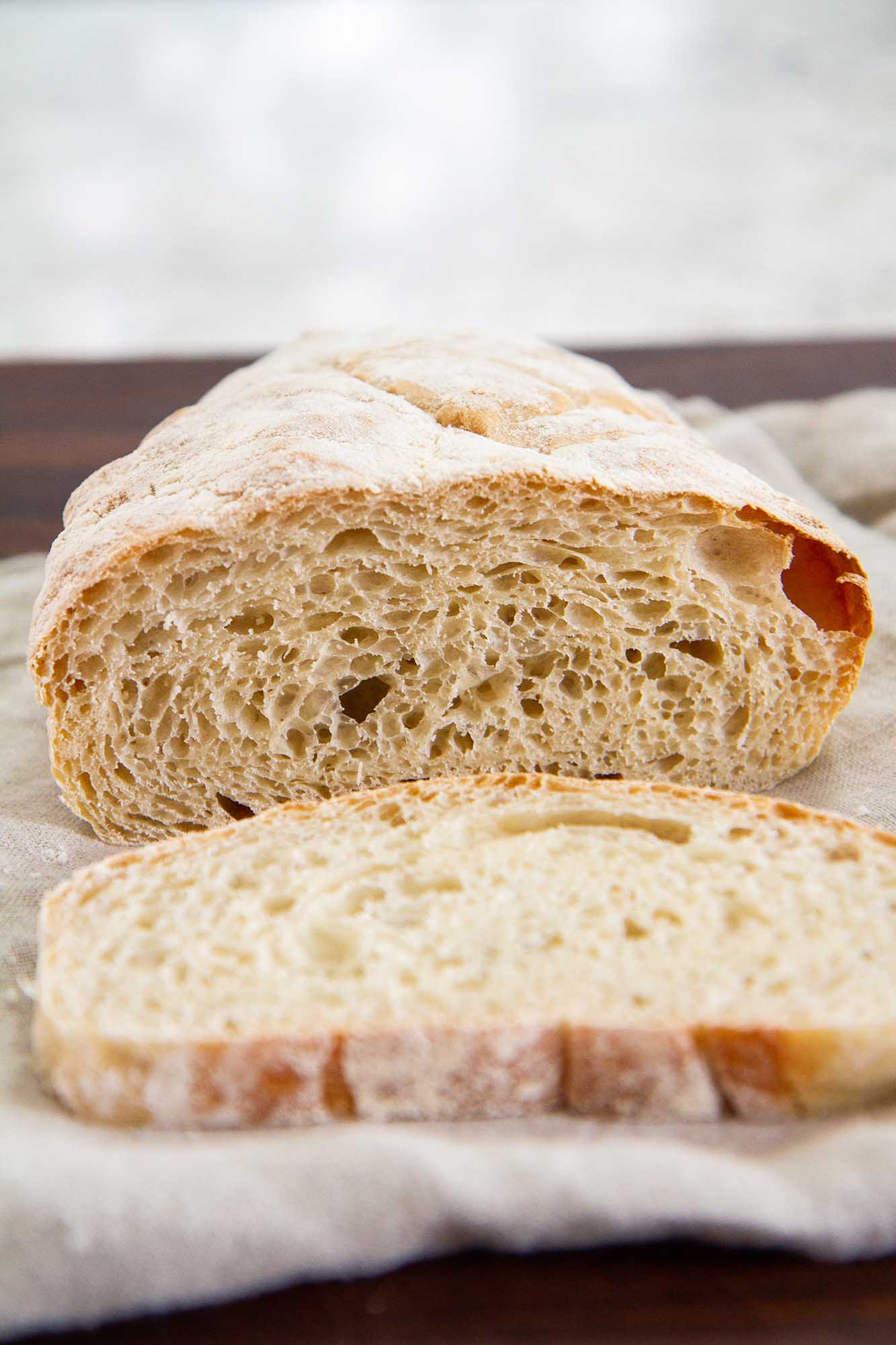
Stop trying too hard to bake the perfect bread! With this no knead ciabatta bread recipe, you can make the best-ever, foolproof scratch bread in your own kitchen with ease. Promise.
Happy 2019, friends! I hope the holidays treated you well with plenty of people you love and more Christmas cookies to devour than you ever thought possible. We spent the holidays (and actually, the greater part of the month of December) with my family in southern Wisconsin. We’ve been living here while we transition from RV life to apartment life back in Minneapolis (THIS WEEKEND. We move THIS WEEKEND), so it was good to be part of all of the family festivities this year.
But once the hubbub of the holidays died down, it was time to get serious. No, not with packing, SILLY — with baking this glorious no knead ciabatta bread for y’all. OK, also with packing. But that’s far less exciting.
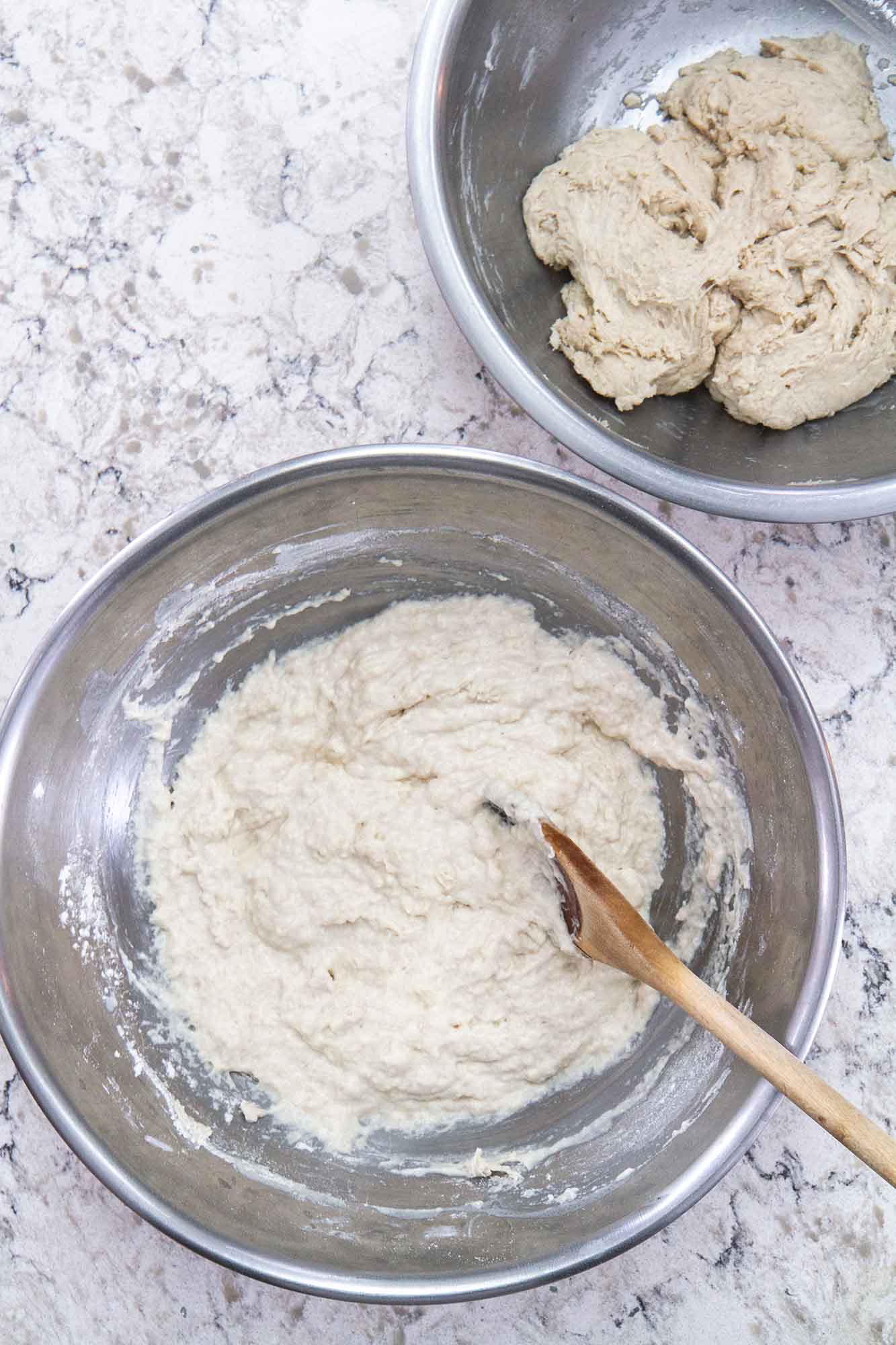
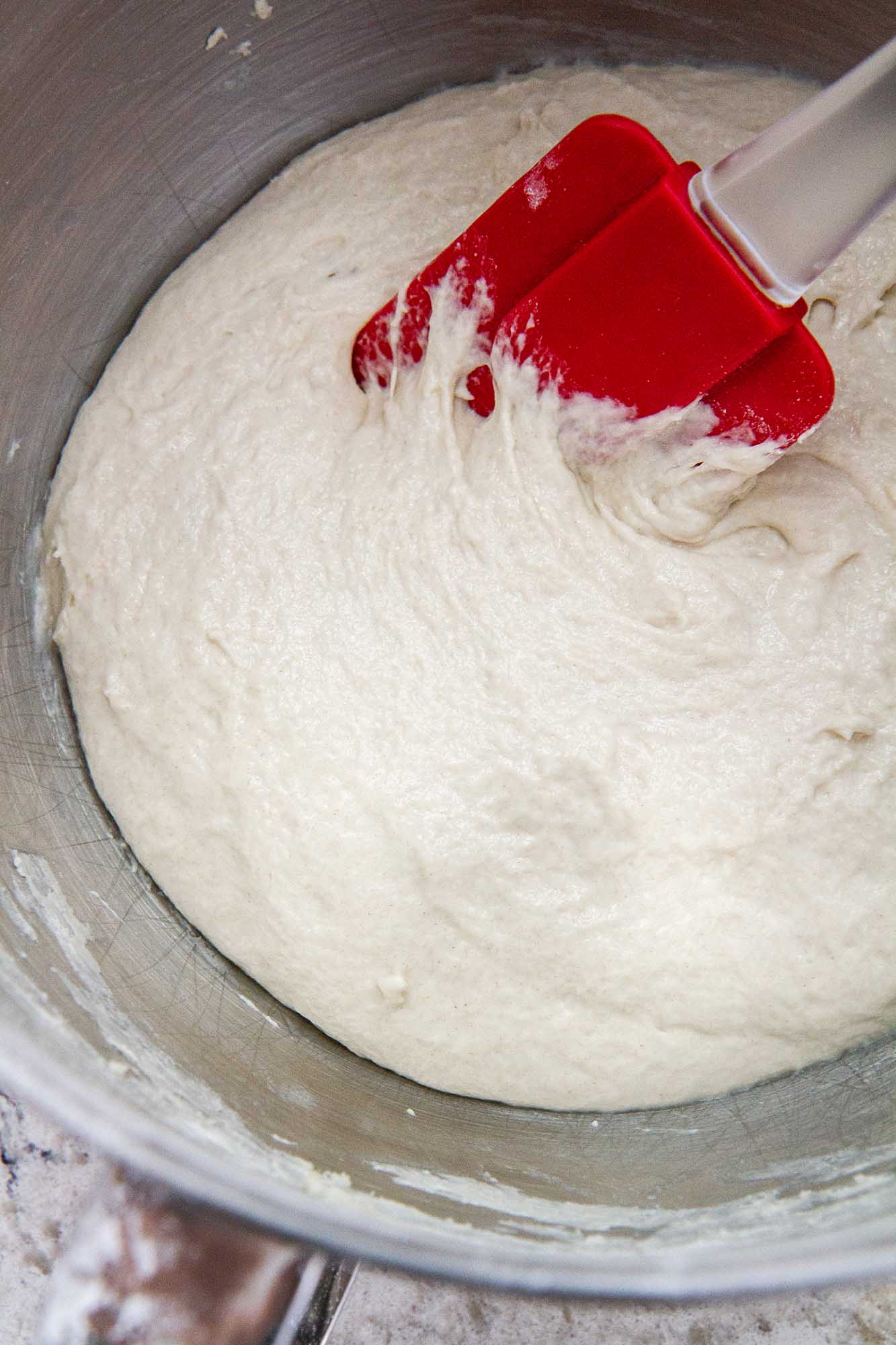
HOW TO MAKE NO KNEAD CIABATTA BREAD
I know a lot of us naturally take the new year to make intentions/resolutions/goals/whatever you decide to call it, and I am definitely one of them. I don’t always write them down or say them out loud, but I do keep an internal list of goals for myself (Type-A perfectionist overachiever, party of one) that I strive to achieve over time. This year, one of my goals is to streamline Girl Versus Dough into a blog that works better for YOU, dear friend. And that starts with, in part, listening to your requests and putting them here in recipe form.
Since my no knead Dutch oven bread is always and forever the popular kid on this blog, and since many of you requested a foolproof ciabatta bread recipe on the ‘gram, I thought I’d combine the ease of no knead bread with the airy, crusty, flavorful deliciousness of homemade ciabatta bread and make one glorious creation that requires you to lift nary a kneading finger.
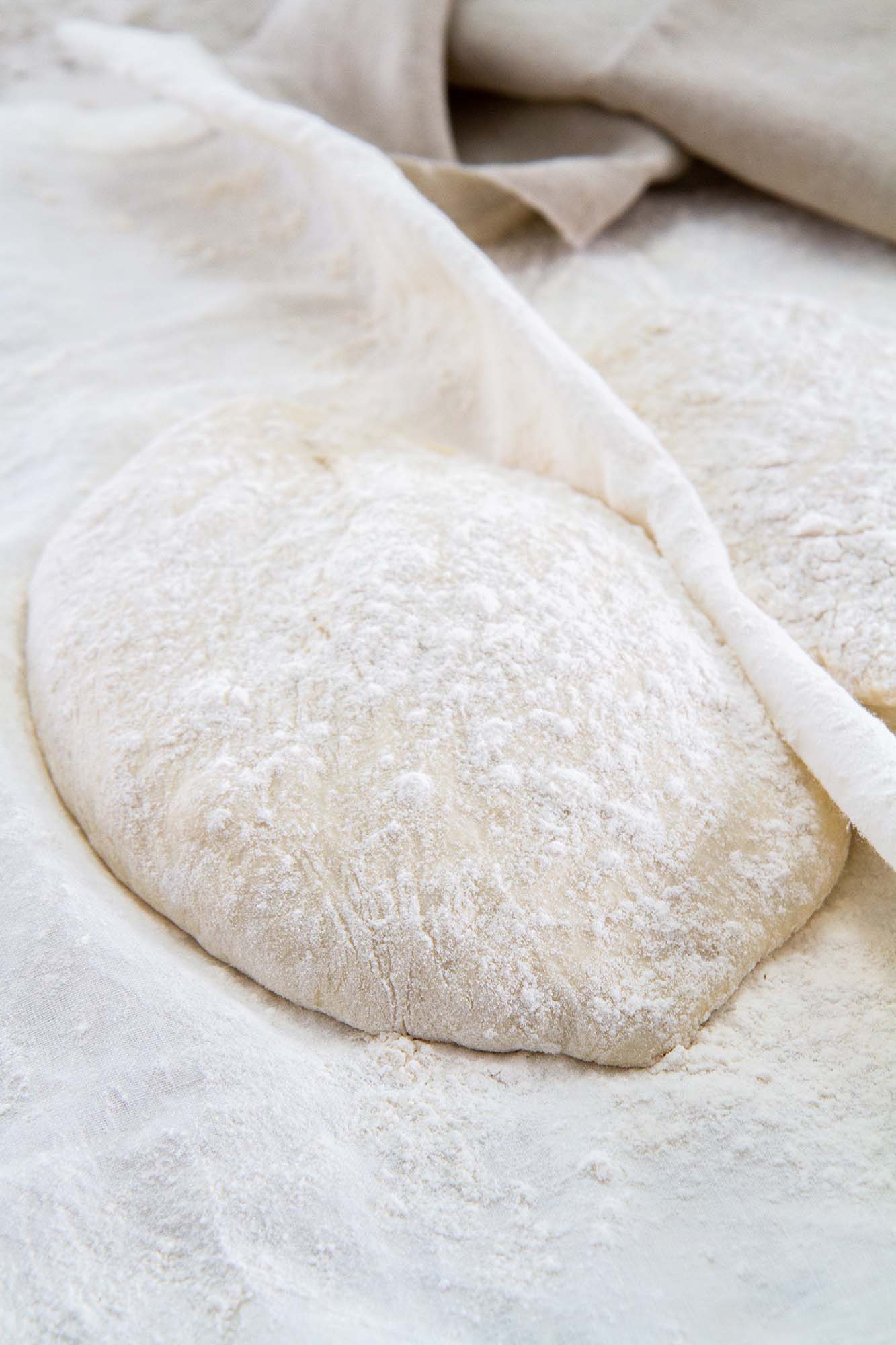
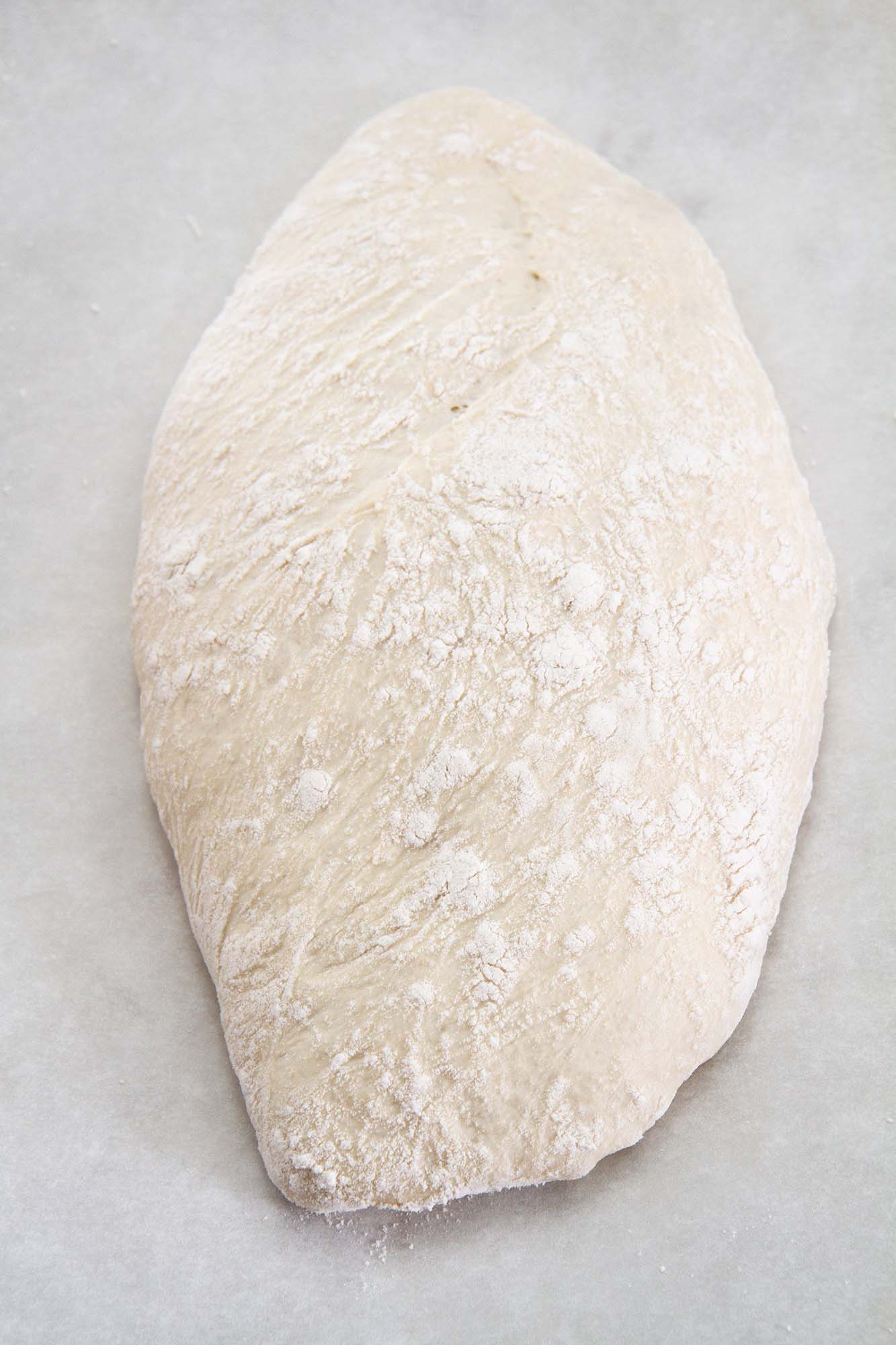
I will be honest with you — this recipe took me three tries to get it right. In the first two rounds, I tried to cut down on the rise time and incorporate a few steps into one. The result was a dense, flat, flavorless loaf. Blech. The third and final round, I decided to take a breath, be patient, and let the dough rise longer so those gorgeous air pockets and glutinous strands could take their time to develop. And lo, I am so glad I did.
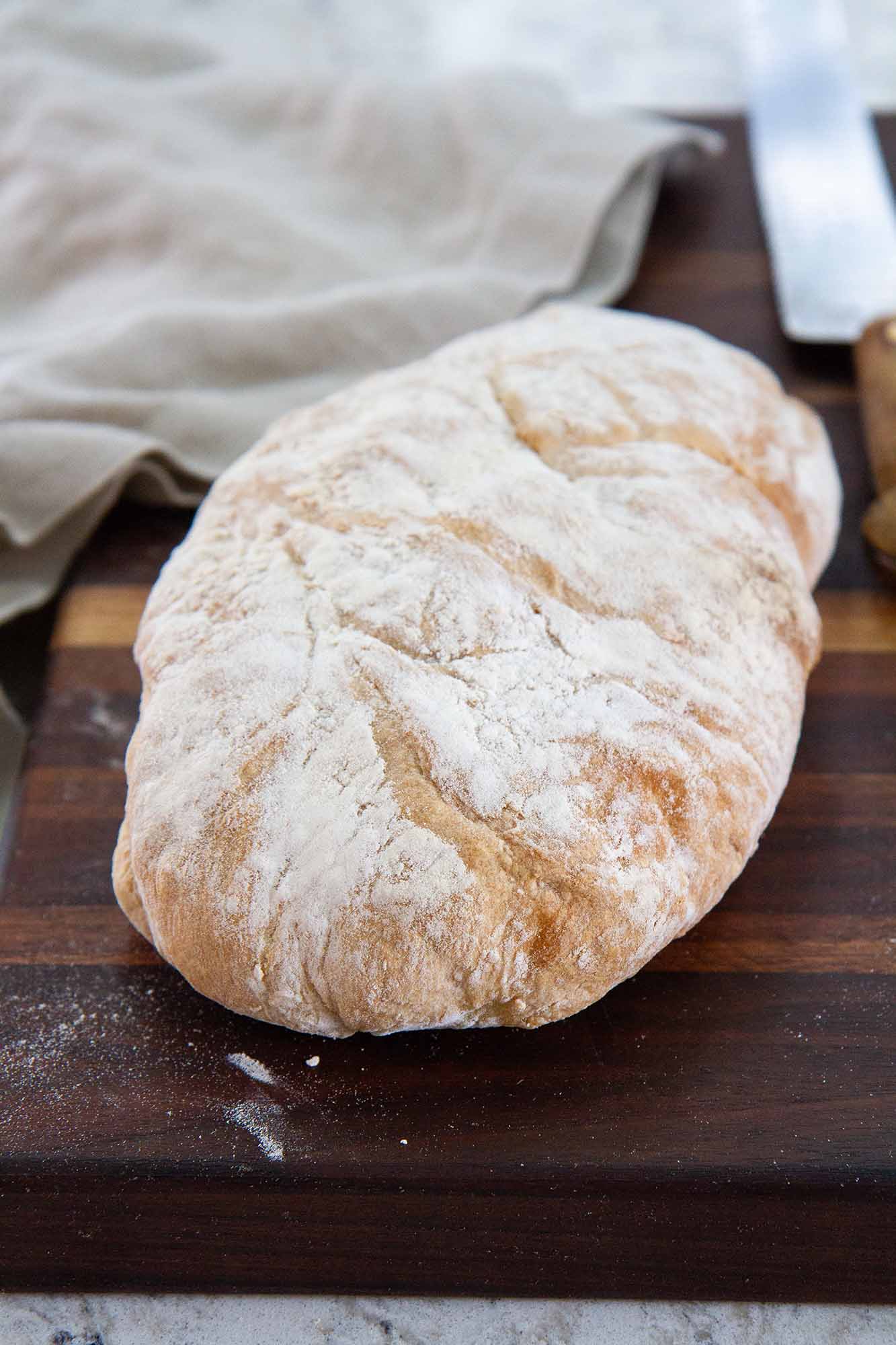
TIPS FOR BAKING HOMEMADE CIABATTA BREAD
Here are a few tricks of the trade I learned when creating this no knead ciabatta bread recipe that will help you to achieve bread boss level in your own kitchen:
1. Do not touch the dough! I mean it. Manipulating the dough during this process any more than it needs to be will deflate those pretty pockets, and that would cause sad faces everywhere. So be sure to follow the directions exactly as written, use a rubber spatula to transfer the dough when called for, and ONLY use your fingers to move the loaf from one place to another (OK, YES, that counts as touching, but you get my point).
2. Let the dough do its three-hour rise in the bowl, covered with a clean linen or tea towel, in the oven with the door closed and the oven light on (keep the oven itself off, though, obviously). The heat from the oven light alone will generate just enough warmth in the closed oven to help the dough rise. This is one of my favorite tricks, especially in the chilly winter months or if your kitchen is particularly drafty.
3. Let the loaves cool completely before slicing into them. This is based on personal experience of once again, ahem, being too impatient. When you cut into the hot loaves, the air pockets get pushed down and the bread itself will be slightly gummy instead of soft inside of that crisp-crusty exterior.
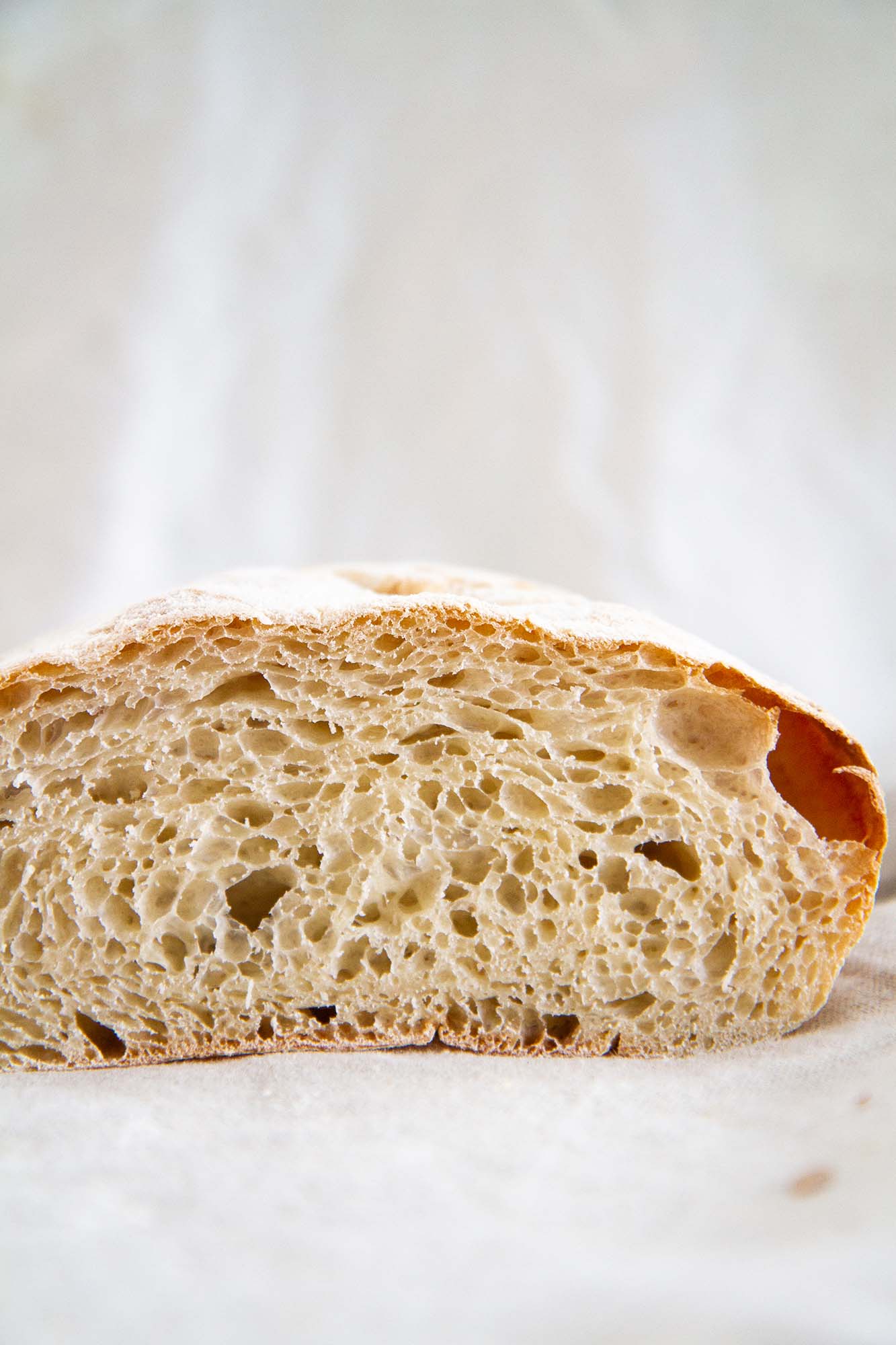
So, tell me: What are your goals for 2019? I’d truly love to hear them! And if you have any requests or ideas for how to help me make Girl Versus Dough the best it can possibly be this year, please do let me know in the comments, via e-mail, or on the social medias. HELP ME HELP YOU. That’s what this space is all about, after all — to make baking (especially bread baking) more fun and easy for you. And while you’re at it, add this ciabatta bread to your goal list this year. You won’t regret it (your happy and full tummy won’t, either).
P.S. Did you see my blog header update? I have a shop! Now you can handpick and click for your own kitchen all the tools I use for baking success. Easy peasy.
Print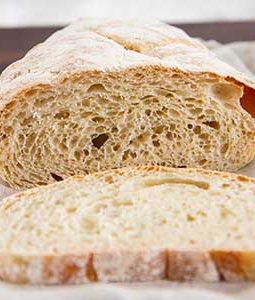
No Knead Ciabatta Bread
- Prep Time: 12 hours 30 mins
- Cook Time: 25 mins
- Total Time: 12 hours 55 mins
- Yield: 2 loaves 1x
- Category: Bread
- Method: Bake
- Cuisine: Italian
Ingredients
- 1 1/2 teaspoons instant or fast-acting yeast
- 3 1/4 cups warm water (105°F to 115°F)
- 4 1/2 cups all-purpose flour, plus more for dusting and shaping
- 2 teaspoons salt
- 1/2 teaspoon olive oil
Instructions
- In a small bowl, mix 1/4 teaspoon of the yeast and 1 cup of the warm water. Let stand 10 minutes. In a large bowl, stir 1 teaspoon of the yeast-water mixture (discard remaining yeast-water mixture) and 3/4 cup of the water to combine. Add 2 1/4 cups of the flour, and stir with a wooden spoon until a stiff dough forms. Cover with plastic wrap, and leave at room temperature 8 to 12 hours.
- In a large bowl or bowl of a stand mixer, stir 2 1/4 cups of the flour, 1 1/4 teaspoons of the yeast and the salt with a whisk or paddle attachment until just combined. Stir in 1 1/2 cups of the warm water. Add stiff dough mixture; stir with wooden spoon until combined, adding more flour 1 teaspoon at a time until dough just begins to leave sides of bowl; OR, stir on low with paddle attachment 1 minute, increasing to medium speed and mixing 4 minutes, adding more flour 1 teaspoon at a time until dough just begins to leave sides of bowl. Dough will be very sticky.
- Rub olive oil into bottom and sides of a clean large bowl. Use a rubber spatula to transfer dough to oiled bowl. Cover with plastic wrap; let rise in warm place 3 hours until doubled.
- Use a rubber spatula to transfer dough to a well-floured surface; using spatula, fold dough over three times, like a letter. Use a bench scraper or sharp knife to divide dough in 2 equal-sized pieces. Generously sprinkle a clean kitchen towel with flour; use your fingers to gently transfer dough pieces to towel. Cover with another clean kitchen towel and let rise 1 hour.
- Heat oven to 450°F. Line 2 baking sheets with parchment paper. Use fingers to gently transfer loaves to baking sheets. Bake 25-30 minutes or until baked through and golden brown. Transfer loaves to cooling rack to cool completely.

I am a bit confused over the small amount of yeast and water then the discarding the water. ????
I agree with you Charlotte Moore! Step one makes no sense at all. I was about to print this recipe up so I could start making it, but it’s like the old saying, “don’t throw the baby out with the water.” LOL I hope Stephanie makes the needed changes to this recipe!
I was confused by that, too, Charlotte. I must have read it 20 times, and I think I understand it now. You start out with 3 and 1/4 cups of warm water. Out of that you take 1C (leaving you with 2 and 1/4C), put it in a small bowl and mix in 1/4 t of yeast and let it stand for 10 minutes. After the 10 minutes, take out 1t and put it in a large bowl. Discard the rest of the water that sat for those 10 minutes. Then you take 3/4 C more water from the remaining 2 and 1/4 C to mix with the 1t of yeast water in the large bowl. Now you’re left with 1 and 1/2 C of the original water. You add that in step 2. I hope this helps a little bit. The only way I could figure it out was to always keep in mind the original 3 and 1/4 Cups of water. Good luck! I probably confused you even more!!
Ginny, YES. You got it. The reason you start out with 1 cup of water with the yeast is because you need to dilute the yeast mixture that much in order for it to achieve its proper rise. I know it seems confusing and wasteful, but trust me, it’s not a typo! I hope that makes sense for all of you now! Please e-mail me if you need more explanation!
Very confusing recipe instructions. Not necessary
I really love making bread but have problems with my wrists so the ‘no knead’ recipes are ideal for me, however I live in the UK where we use metric measurements and wondered if you would be able to include metric measurements in your recipes? I love ciabatta bread and would really like to try this recipe, thank you
Helen, Thanks for the comment! At this time I am unable to commit the time to including metric measurements to my recipes, HOWEVER, it’s on my list of to-dos for the blog over time. I will certainly add metric measurements when I am able to tackle that project, but for now, I would suggest using Google to make the conversions!
I am confused about the yeast & water & discard as well.
Judy, please see my comment above in reply to Ginny!
Thank you for this amazing recipe! This is my first time making Ciabatta Bread and your directions were excellent. I do have a general question, why place the bread on a floured kitchen towel for the second rising? When I had to move my perfectly shaped, risen dough to the baking sheet the end product wasn’t as pretty but the taste and texture was perfect.
Thank you for all you do!
Angie, great question! The friction of the towel helps the loaf from spreading too much when it rises the final time. If you let it rise on the baking sheet, it might spread too much when it rises and end up flatter, since the dough is so delicate from the air pockets. I hope that makes sense. I’m so glad you made the bread, though, and enjoyed it!
This does make sense, thank you. Now another question, what is the best way to store it?
Store it covered in an airtight container or plastic bag at room temperature for up to 1-2 days. The crust won’t stay crusty after the day it’s baked, but it’ll still taste good!
I love ciabatta and this looks absolutely perfect!
Laura, thank you, friend! If you like ciabatta you’d love this recipe. xo
This bread was delicious! We enjoyed it in our household and shared the other loaf with our neighbours. Great recipe thanks for sharing.
Carol, I’m so glad to hear! Thanks so much!
Thanks for all the delicious recipes!
How do the results from this recipe differ from your original ciabatta recipe from 2009? Which one is more foolproof? Which one do you recommend starting with if I’m baking ciabatta for the first time?
Hi Sophie, great question! Both recipes work, but this recipe is more foolproof and easier to handle, since it’s no knead. If you’re baking ciabatta for the first time, go with this one!
OK, I accept I am a mere man but something is severly wrong with this recipe.
In stage one you are asking us to make a stiff dough with a 33% hydration (3/4 cup water in 2 1/24 cup flour ). I find that quite impossible since not all the flour got wet and what did get wet became lumps of “ugh” dough after 12 hours that would not break up in the subsequent mixing process. The lot went into the bin.
One very disappointeed fella.
Norman, So sorry to hear you didn’t have a good experience with this recipe. I’ve never had a serious issue with that step so I’m not sure how to help. I hope you can find a no-knead ciabatta elsewhere that you enjoy more!
I have made this a couple times now and it’s the new family favourite. It turns out great and really a no fail recipe if you follow all of the steps.
I had such a difficult time with this recipe, first loaf so I may need to do a few more times.
Step 1 the Biga.. would like some more instructions because when I added it to the flour mixture it would not break up easily I kept it in a container for 9 hours.
I have a few questions regarding Step 1 the Biga.. I understand the instructions, and let mine sit for 9 hours.
However during Step 2, the Biga didn’t want to mix in easily into the flour mixture.
My next question is the initial recipe is for 3 1/4 cups of warm water at. 105-110. I assume I’m reheating to 105 degrees, for the next step which is 8-12 hours later.
The only mistake I think I made was I didnt use the paddle when I mixed, I used the dough hook.
Will do this again!
Thanks
Connie, If I’m understanding you correctly, the initial flour mixture from Step 1 did not mix well into the flour mixture from Step 2? This is normal — the first mixture is quite stiff and needs some work to get it to mix into the second mixture, which is why the stand mixer is so helpful! Regarding your second question, yes, both times you add water the water should be around 105-115 degrees F. I hope that makes sense. Keep at it, and thanks for your feedback!